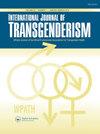睾酮治疗对跨性别患者男性化声音的有效性:一项荟萃分析综述
Q1 Social Sciences
引用次数: 33
摘要
背景:睾酮治疗是变性患者声音男性化的主要治疗方法。尽管睾酮治疗会降低声音的基本频率(f0),但有证据表明声音和性别认同可能并不完全一致。它的使用可能无法达到语音-性别的一致性。目的:本荟萃分析综述评估睾酮治疗对变性患者声音男性化的有效性。方法:查询多个电子数据库(纳入日期:从数据库建立到2017年10月27日),以识别使用睾酮治疗的声音男性化的原始研究。本荟萃分析综述纳入了19篇遵循PRISMA指南的文章。除定性分析外,对f0、语音-性别一致性、语音问题和语音满意度相关数据进行随机效应比例元分析。结果:对60个数据的荟萃分析显示,在睾酮治疗1年后,估计有21%的参与者(95%置信区间[CI]: 5%-43%;I2: 59.9%)未达到顺性别男性的标准频率(f0≤131 Hz)。对不完全语音-性别一致性和语音问题的荟萃分析表明,合计估计为21% (95% CI: 10%-34%;I2: 0.0%)和46% (95% CI: 14%-79%;I2: 90.2%)。关于对声音的不完全满意,一项荟萃分析显示,综合估计为16% (95% CI: 7%-28%;I2: 0.0%)。讨论:我们发现并不是所有使用睾酮治疗来使声音男性化的跨性别患者在1年后都能期望频率降低到正常的顺性男性。对于许多患者来说,声音的转变可能涉及到声音问题,如果没有额外的、声音特定的干预,有些人可能无法达到声音-性别的一致性。鉴于这些发现,应该在开始睾酮治疗之前进行声音评估,并包括对声音期望的咨询。追求声音男性化的跨性别患者可能需要从喉科和语言治疗方面进行管理,以改善声音性别一致性,减轻声音问题,提高对声音的满意度。本文章由计算机程序翻译,如有差异,请以英文原文为准。
Effectiveness of testosterone therapy for masculinizing voice in transgender patients: A meta-analytic review
ABSTRACT Background: Testosterone therapy is the predominant treatment for voice masculinization in transgender patients. Although lowering of voice fundamental frequency (f0) occurs with testosterone therapy, evidence suggests voice and gender identity may not fully align—i.e., voice-gender congruence may not be achieved—with its use. Aim: This meta-analytic review evaluates the effectiveness of testosterone therapy to masculinize voice in transgender patients. Methods: Multiple electronic databases were queried (inclusion dates: from database inception up to October 27, 2017) to identify original research on voice masculinization using testosterone therapy. Nineteen articles were included in this meta-analytic review, which followed PRISMA guidelines. In addition to qualitative analyses, random effects proportion meta-analyses were performed on data related to f0, voice-gender congruence, voice problems, and satisfaction with voice. Results: A meta-analysis on f0 data showed after 1 year of testosterone therapy a combined estimate of 21% of participants (95% confidence interval [CI]: 5%–43%; I2: 59.9%) did not achieve cisgender male normative frequencies (f0 ≤ 131 Hz). Meta-analyses on incomplete voice-gender congruence and voice problems indicated combined estimates of 21% (95% CI: 10%–34%; I2: 0.0%) and 46% (95% CI: 14%–79%; I2: 90.2%), respectively. Regarding incomplete satisfaction with voice, a meta-analysis showed a combined estimate of 16% (95% CI: 7%–28%; I2: 0.0%). Discussion: We found that not all transgender patients using testosterone therapy to masculinize voice should expect f0 lowering to cisgender male normative frequencies after 1 year. The vocal transition may involve voice problems for many patients, and some might not achieve voice-gender congruence without additional, voice-specific intervention. Given these findings, a voice evaluation should occur prior to initiating testosterone therapy and involve counseling on expectations for voice. Transgender patients who pursue voice masculinization may need management from laryngology and speech and language therapy to improve voice-gender congruence, mitigate voice problems, and increase satisfaction with voice.
求助全文
通过发布文献求助,成功后即可免费获取论文全文。
去求助
来源期刊

International Journal of Transgenderism
Social Sciences-Gender Studies
CiteScore
5.10
自引率
0.00%
发文量
0
期刊介绍:
International Journal of Transgenderism, together with its partner organization the World Professional Association for Transgender Health (WPATH), offers an international, multidisciplinary scholarly forum for publication in the field of transgender health in its broadest sense for academics, practitioners, policy makers, and the general population.
The journal welcomes contributions from a range of disciplines, such as:
Endocrinology
Surgery
Obstetrics and Gynaecology
Psychiatry
Psychology
Speech and language therapy
Sexual medicine
Sexology
Family therapy
Public health
Sociology
Counselling
Law
Medical ethics.
 求助内容:
求助内容: 应助结果提醒方式:
应助结果提醒方式:


